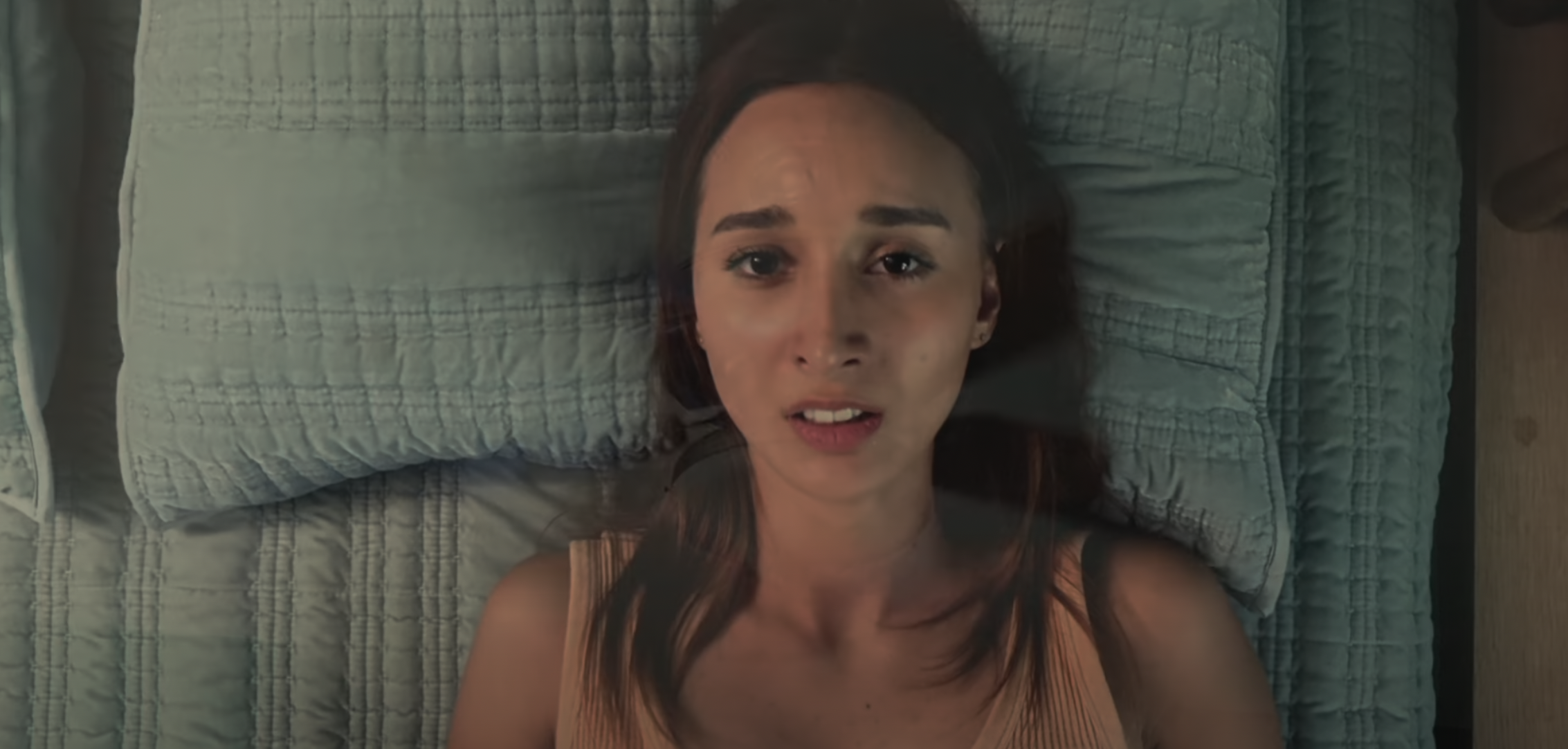Jamie Grefe’s The Mother’s Eye is an unnerving experiment in minimalist psychological horror — one that pushes the limits of low-budget filmmaking while exploring the depths of trauma, guilt, and madness. Shot and edited entirely on an iPad Pro, this 61-minute thriller is as much a creative exercise in stripped-down filmmaking as it is a disturbing character study anchored by America Sossi’s intense, solitary performance.
Sossi plays Anna, a woman attempting to start over after a violent past, only to find herself haunted by resurfacing memories and the looming threat of her unseen tormentor (played by Grefe himself). Set in an isolated Los Angeles home, the film builds tension through silence, repetition, and long stretches of observation — a style that evokes the voyeuristic unease of David Lynch and the meticulous dread of Alfred Hitchcock. Grefe’s direction thrives on atmosphere rather than spectacle, creating a sense of creeping claustrophobia that mirrors Anna’s mental unraveling.
For fans of true crime-inspired horror and home invasion thrillers, The Mother’s Eye offers a compelling psychological angle. The iPad Pro aesthetic — grainy, handheld, and intimate — gives the film a voyeuristic realism, making Anna’s private breakdown feel uncomfortably close. The sound design amplifies this effect, from the ambient hum of her empty home to the subtle cues that suggest something terrible lurking just off-screen.
That said, The Mother’s Eye won’t be for everyone. Its minimalist pace and loose structure often test patience; much of the film consists of Anna pacing, meditating, and wrestling with invisible fears. Some may find these moments hypnotic, others frustratingly inert. The acting occasionally falters under the weight of the film’s self-serious tone, and a few sequences feel improvised or underwritten. Yet even in its roughness, there’s a clear artistic intent — a desire to portray psychological disintegration not through dialogue or plot twists, but through texture, sound, and fragmented memory.
Like Grefe’s previous work (The Idaho College Killer, Blood of La Llorona), The Mother’s Eye walks a fine line between pulp and art. It’s scrappy, uneven, and at times opaque — but also bold in its commitment to mood over mechanics. The ending, grim and ambiguous, lingers long after the credits, suggesting that the true horror isn’t the killer outside Anna’s door, but the one she’s been carrying inside her all along.
Verdict: A raw, unnerving experiment in psychological horror that succeeds more as an art piece than a traditional thriller. The Mother’s Eye may strain the patience of casual viewers, but for those willing to peer into its grainy darkness, it offers a haunting look at trauma, isolation, and the fragile boundary between victim and monster.
Jessie Hobson



